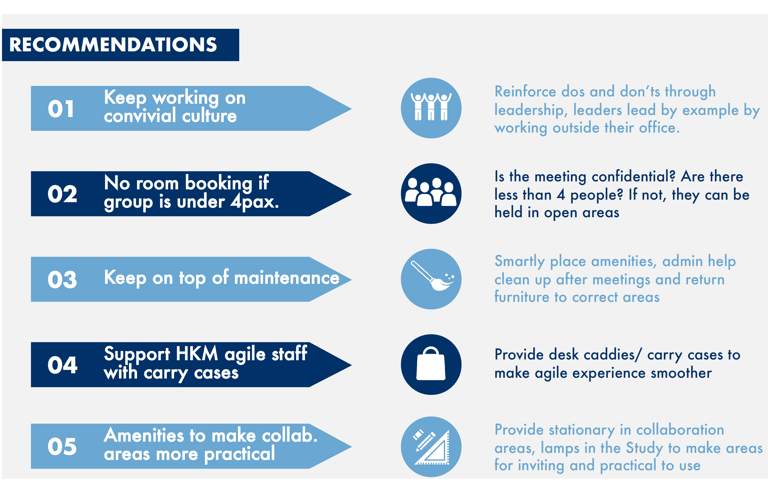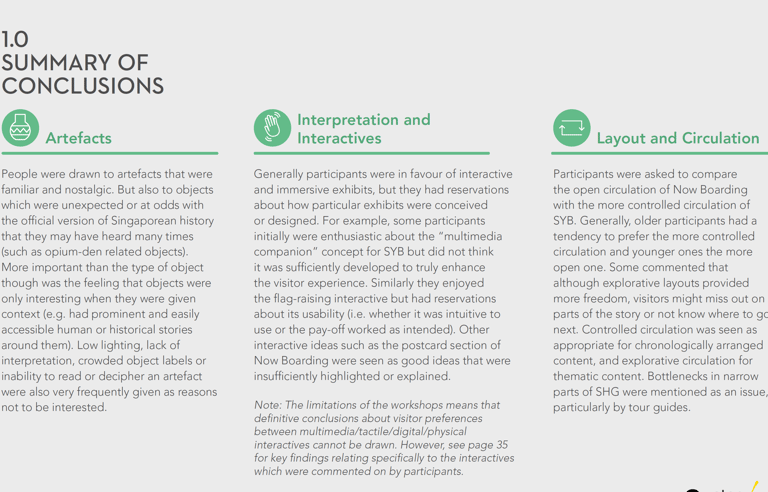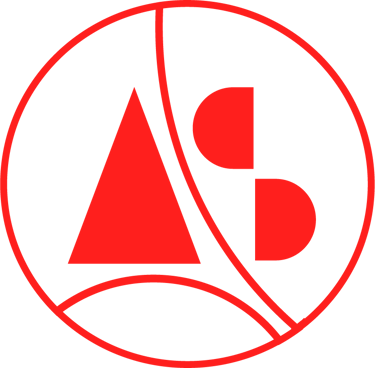Research in Action
My design research experience spans a range of disciplines from museum master planning, museum interactives, workplace strategy and product and service solutions.
See snippets from my process below.
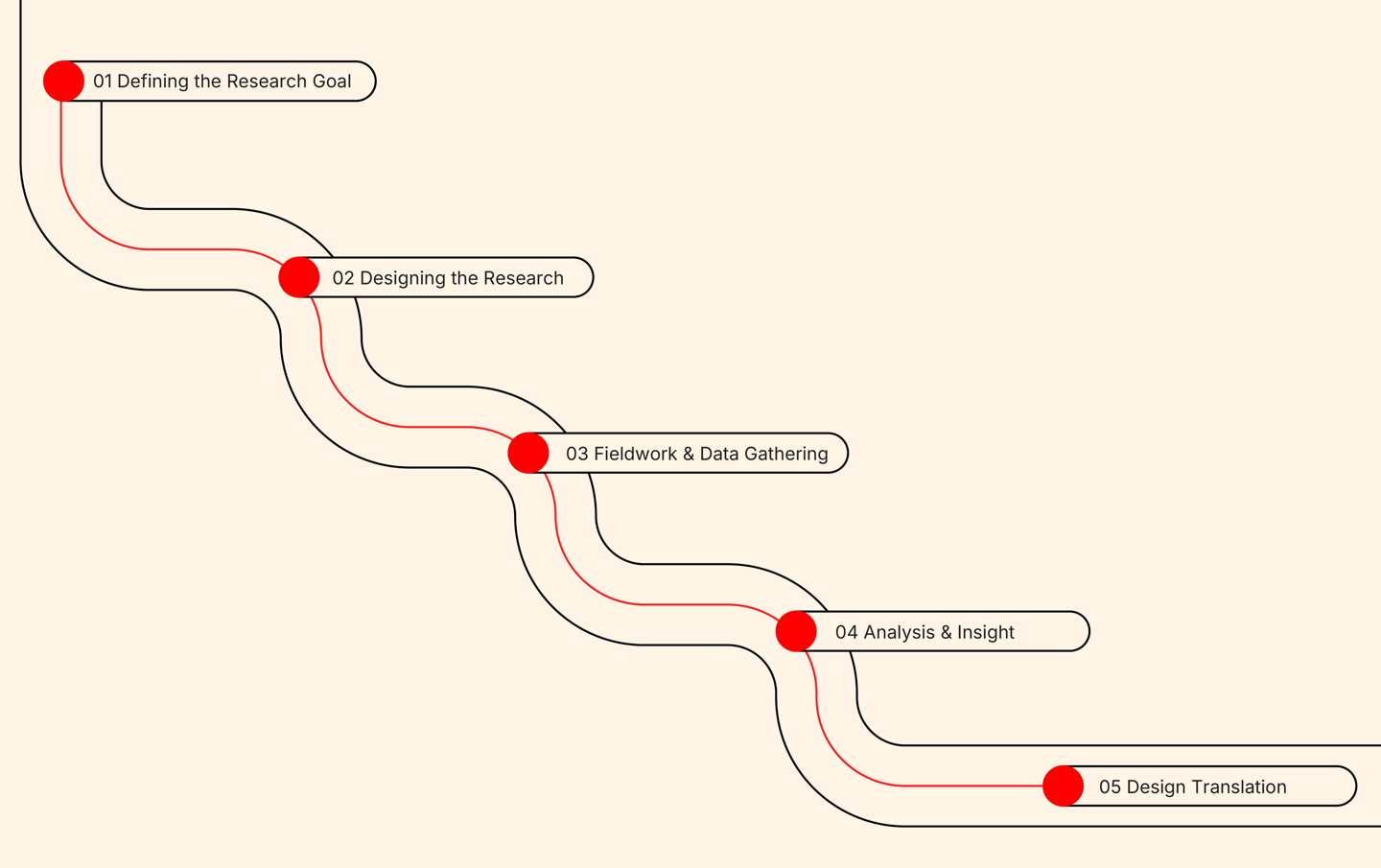

The first phase begins with understanding the mission or the challenge in order to work towards design that makes a difference. The aim is purposeful and socially responsible solutions. To begin, we look at the current design solution or challenge to resolve- whether that be a dated museum visitor experience, or a mis-informed public.
01 Defining the Research Goal
Some examples in practice:
Human First: Solutions must be engaging, effective, and purposeful. For example, redefining the narrative for a National History Museum in Asia required a deep understanding of identity paired with excellent visitor experience to ensure the design resonated with the next generation of visitors.
Celebrating Community: Providing platforms for diverse voices. For a Museum focused on a vital state trucking industry in the USA, the goal was to look beyond the machinery to uncover the authentic, human stories of "unseen heroes," building pride and attracting new talent.
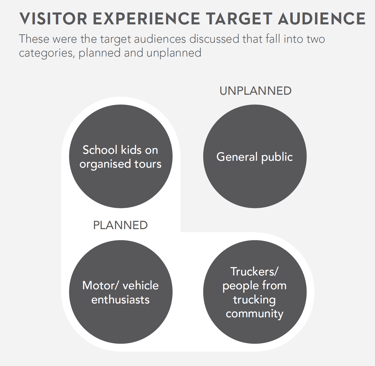

Defining the scope, mapping the environment, and picking the right research methods for the job. During this stage of projects I will define research objectives, check against constraints (like budget and time), and custom-design activities for research participants.
02 Designing the Research
Some examples in practice:
Clear Objectives: For a Conservation Park & Museum in Hong Kong, the main objective was clear: understand current visitor motivations, needs, and aspirations to figure out how to redesign the experience to better support the park's three goals: Conservation, Education, and Tourism.
Stakeholder Mapping: For the Conservation Park project, extensive mapping was necessary, ensuring we talked to everyone from park staff and government representatives to volunteers, teachers (Primary and Secondary), the HK Tourism Board and accessibility charities, experts and users with particular access needs.
Custom Activities: When working on a National History Museum in Asia, I didn't rely on generic methods. Instead, I architected a robust public engagement strategy, designing specific participatory activities and structured worksheets for in-gallery observation and workshops.
The fun bit; observing real behavior, listening to people, asking questions - during this stage it's about collecting rich data through diverse methods, both on a large and small scale.
03 Fieldwork & Gathering Data
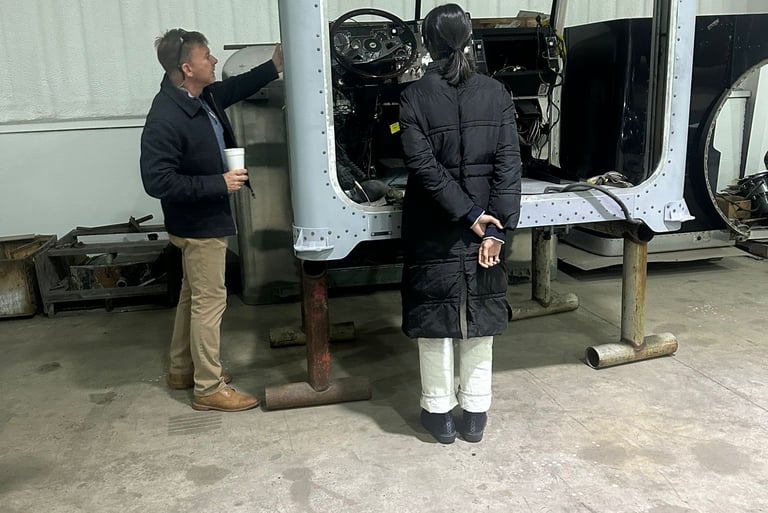

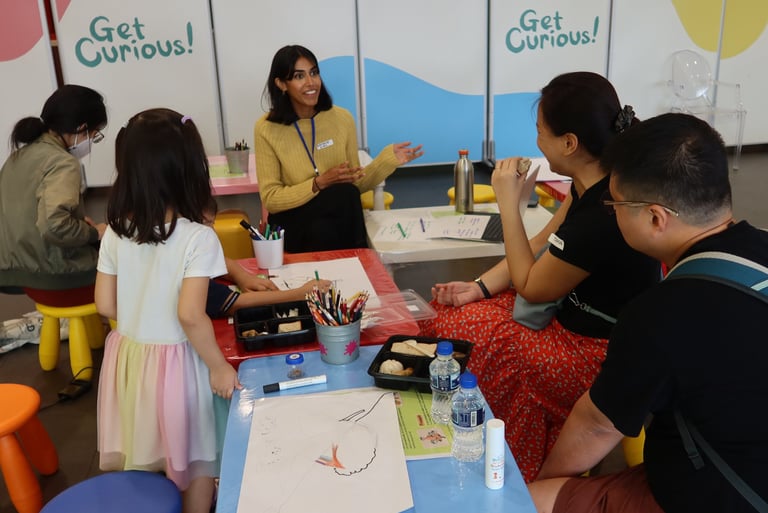

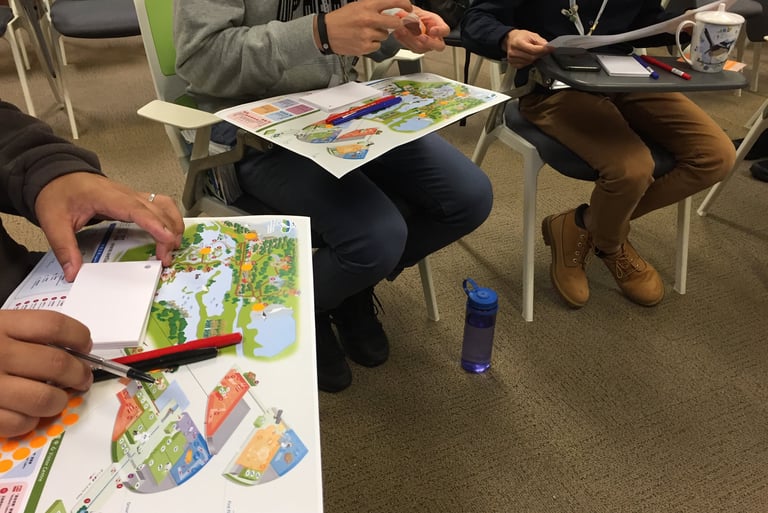

Summary of Process and Experience
Immersive Ethnography: For a museum celebrating a vital state trucking industry in the USA, I led an intense, state-wide ethnographic research trip across Louisiana. This deep dive involved shadowing, direct observation, and demonstrations to understand the industry from the mechanic’s garage to the driver’s cab.
Mass Engagement: For a National History Museum in Asia, I facilitated a comprehensive workshop series that gathered feedback from 111 participants across demographics including school children, students, parents, general public and seniors. Activities included using focus groups with images and prompts to discuss nuanced topics like identity.
Combining Methods: In an Office Headquarters Transformation project in Hong Kong, I balanced quantitative and qualitative data: we used a comprehensive quantitative pre-move survey (achieving a high 78% completion rate) alongside on-site ethnographic observations to identify pain points like the need for better acoustic quality and privacy.
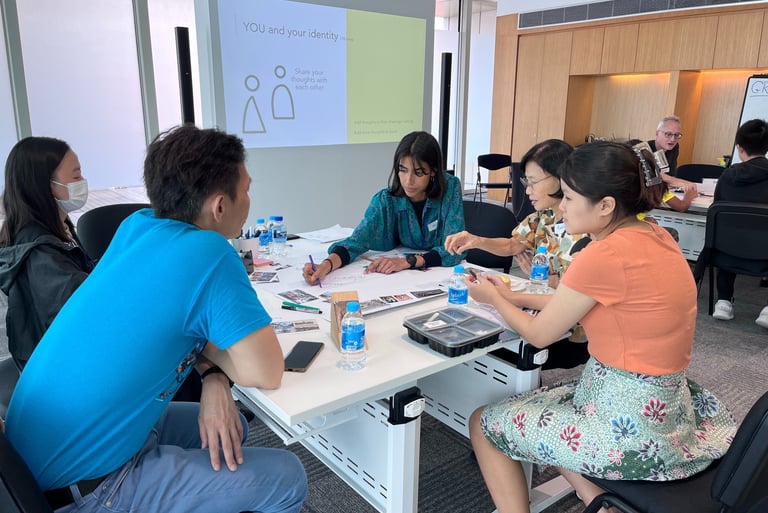

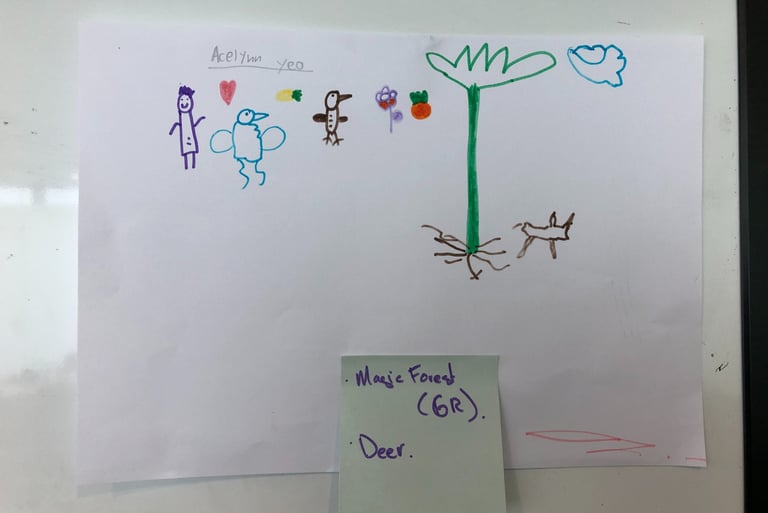

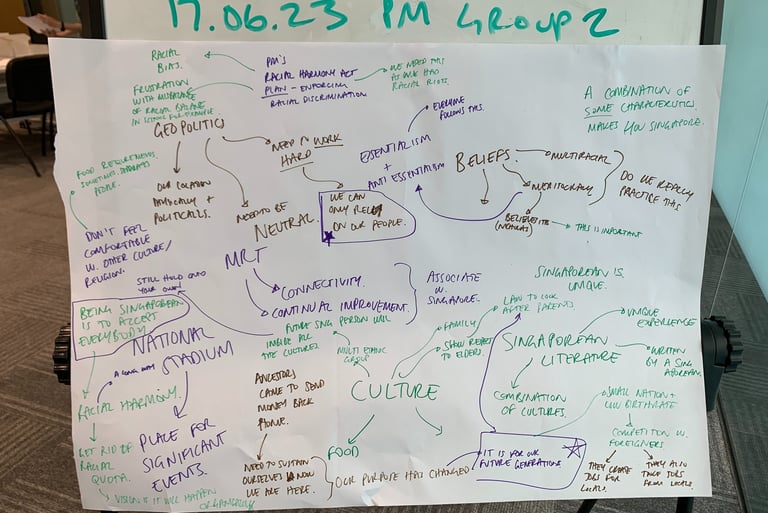

Making sense of the mess. This stage is about translating raw notes, quotes, and survey numbers into useful, compelling and quotable insights.
04 Analysis & Insight
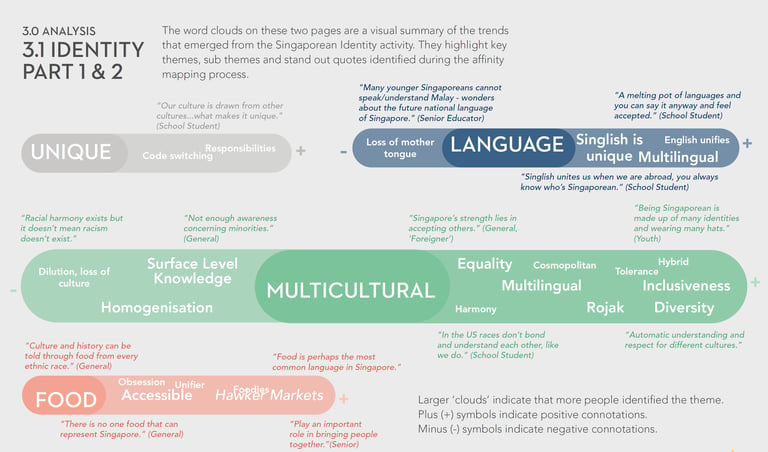

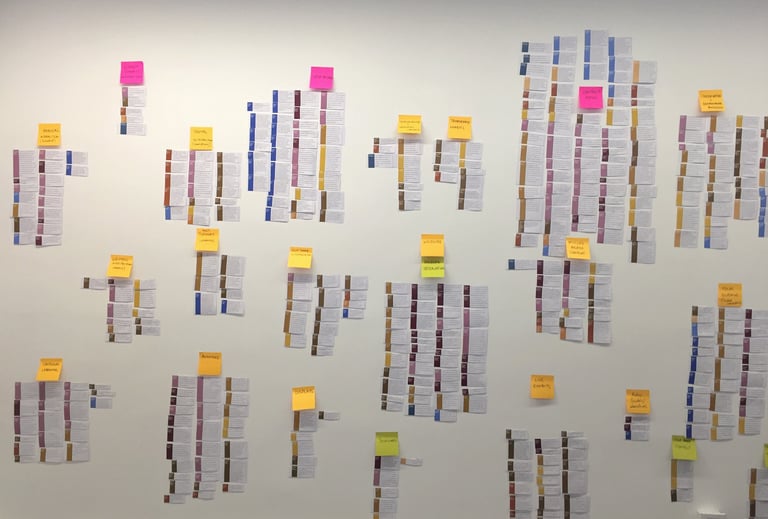

Summary of Process and Experience
Finding the Patterns: For the Conservation Park & Museum in Hong Kong, we used Affinity Mapping to interpret, code, group, and regroup observations, allowing patterns in the data to emerge clearly.
Defining the Core Story: Research for a Museum celebrating a vital state industry in the USA revealed that the most critical story was the human element. Interviewees proudly identified themselves as highly skilled professionals—"a mathematician, a physicist, a meteorologist, and a traveller". Key identifiers, later incorporated in the museum content.
The Blueprint: For the National History Museum in Asia, all findings were compiled into a comprehensive 54-page “Visitor Engagement Report,” providing a clear articulation of high-level design implications.
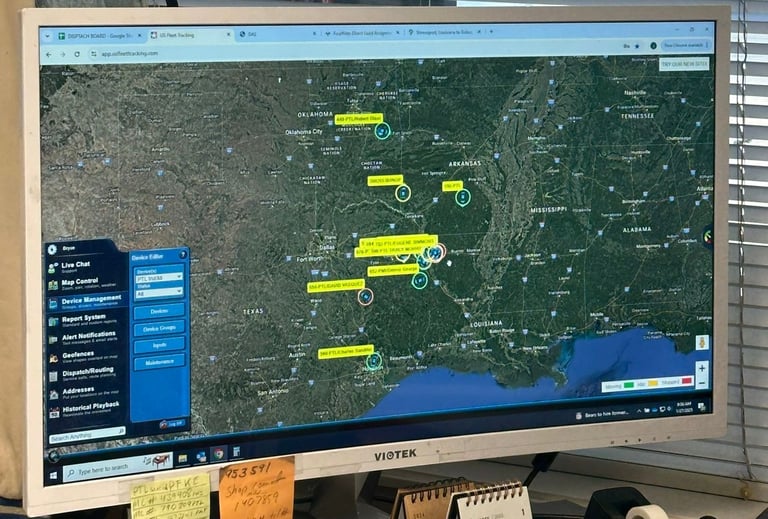

The final step is ensuring that research findings become the evidence-based blueprint that guides the design team and client through major conceptual, content, and spatial decisions.
05 Design Transition
Summary of Process and Experience
Rethinking an office space: For the headquarters for Pernod Ricard in Hong Kong, our research showed that employees' top priorities were comfortable seating and privacy. They said the existing layout was culturally disconnected and suffered from inefficient zoning that hindered collaboration. Therefore our design recommendations ensured focus shifted toward creating a more open and collaborative environment. The implementation included an iconic bar and a social café to foster the communal spirit core to the brand
